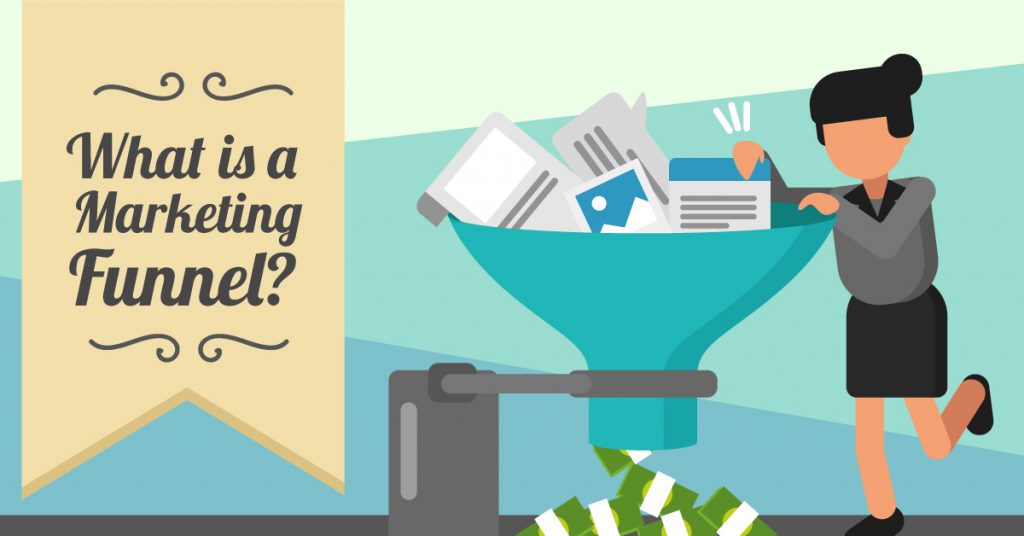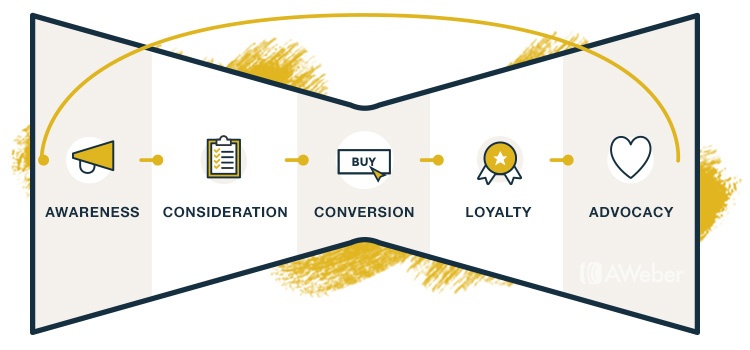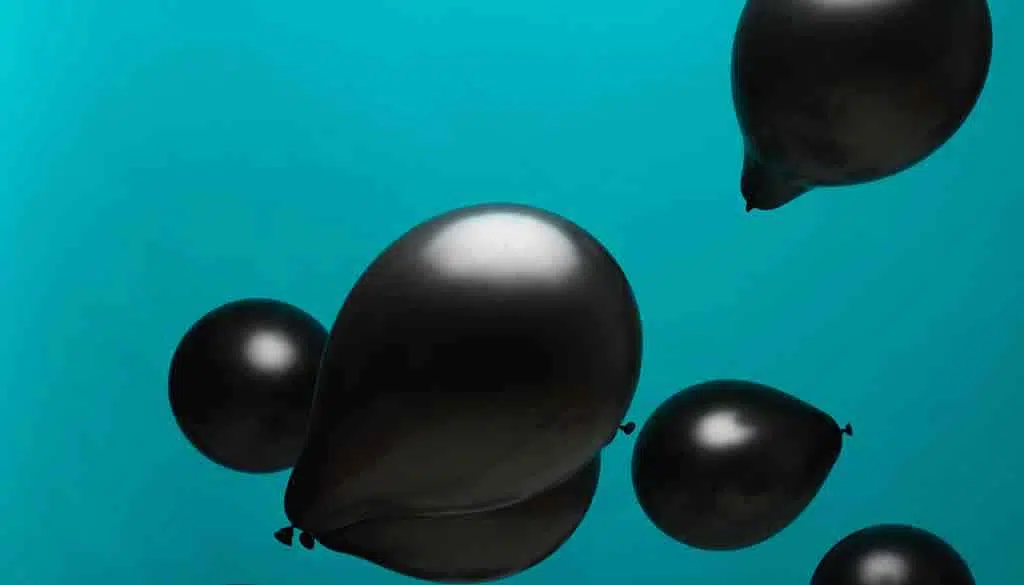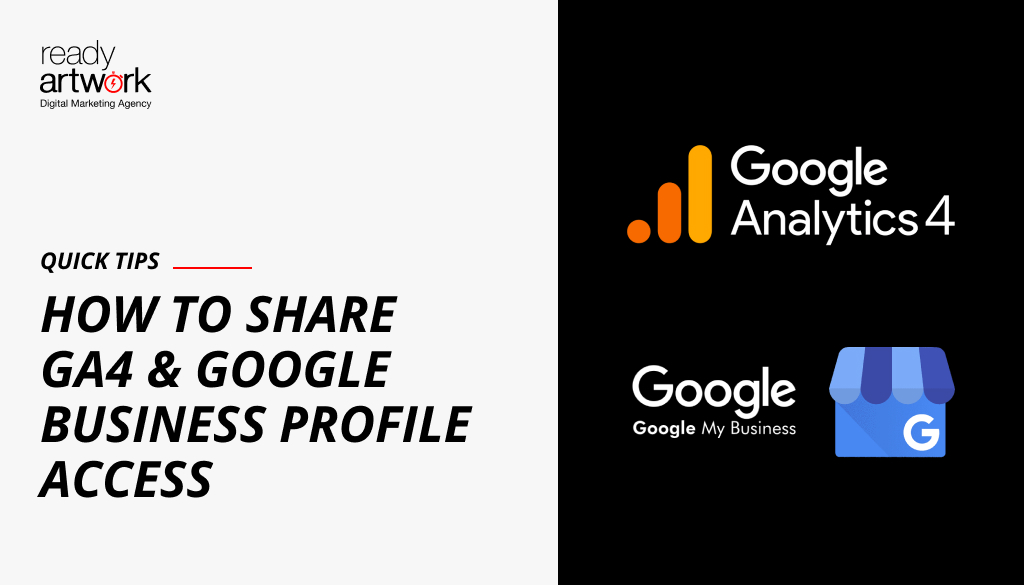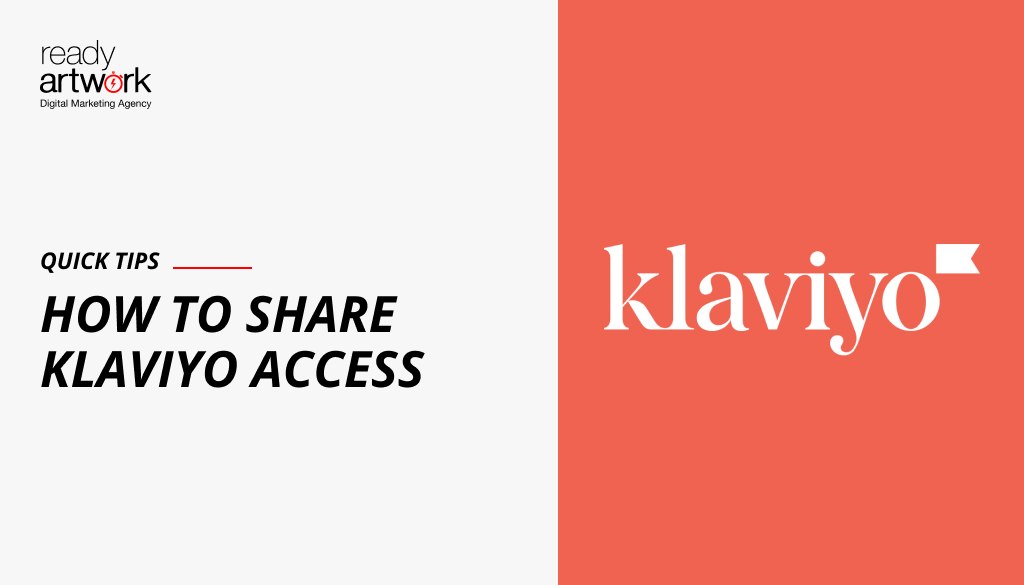What is a Marketing Funnel?
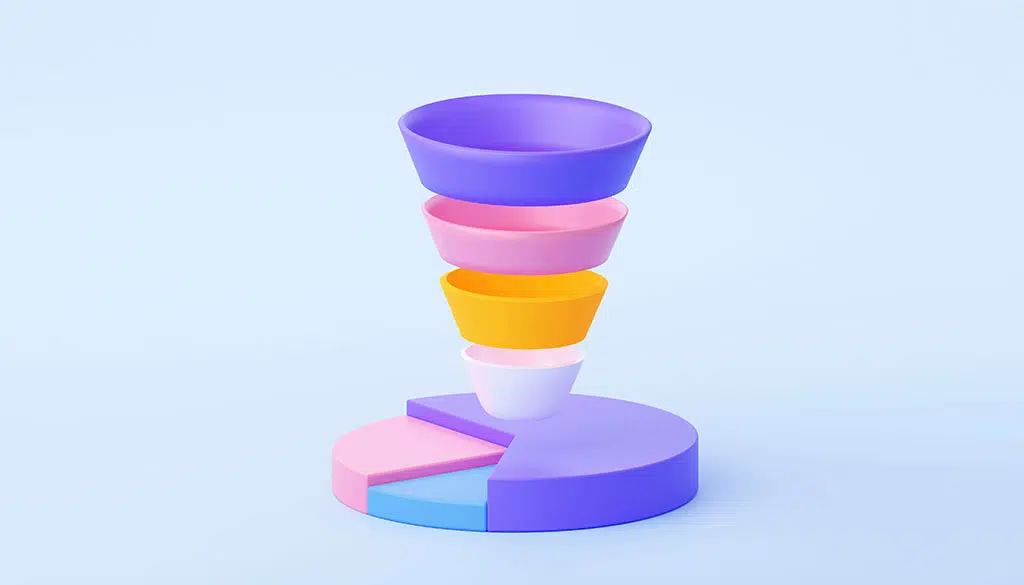
Table of Contents:
- Definition of Marketing Funnel
- Stages of the New Marketing Funnel
- Create Your Full Funnel Marketing Strategy with Ready Artwork
So you’ve got your new website up and running. You’ve spent a lot of time and resources into making sure it looks nice and that it’s up to date. But what’s the next step for a business owner like you? You need to build an online marketing funnel to help convert your website visitors into loyal customers.
What is a Marketing Funnel?
A marketing funnel is the steps that a customer goes through from when they first learn about your business, the “awareness” stage, all the way to the end, the “purchase” stage.
You may have seen funnels like the one below.
But this is outdated and it’s time for you to reconsider what your marketing funnel should look like. Instead, your relationship with your customer shouldn’t end at a bottom of a cone shaped funnel, rather your funnel should open up after the person purchases from you and focus on customer retention; what should the journey look like after a person buys from you?
You shouldn’t just forget about your clients after they purchase; there’s a great opportunity for you to create a deeper relationship between them to make them loyal returning customers!
According to the Harvard Business Review, profits rise as a customer’s relationship with a company lengthens. They’re more likely to keep buying from you! Plus, happy customers are great for marketing; they’ll constantly refer people to your business.
The Stages of the Updated and More Effective Marketing Funnel
1) Awareness:
The goal of this first step is to show the value of your product or service. This is where you start to build a relationship with your customer. Instead of trying to sell, focus on establishing your brand and building trust with potential customers. This is where social media, blog posts, and emails come into play. It’s important to remember that people are learning about your business for the first time. You haven’t established trust yet since they do not know you, so don’t try to ‘sell’ at this stage.
2) Consideration:
After you get your customers’ attention, you’ll need to build a deeper relationship with your subscriber and introduce them to your product with more targeted content. Deliver content that is product specific but try not to be too ‘salesy’. Since you know more about your subscriber in this stage than you did during the awareness stage, you can send them more targeted content that addresses them personally. Your customers can see that you can provide the solution or solutions to their problems.
3) Conversion:
Here’s where you finally convince your customer to purchase. Emphasize the benefits of your product or service rather than just explaining features. Here’s where you can offer discounts and deals to try to create a sense of urgency and gain customers.
4) Loyalty:
Here’s where the old and new Marketing funnel start to differ. Most businesses, once they gain customers, are tempted to just move onto the next prospect, but forgetting about your customers is damaging to your business. You need to develop a customer loyalty program otherwise you’d have wasted a lot of your prior marketing efforts in the previous stages of the funnel. Repeat customers and longtime customers are too valuable to ignore.
5) Advocacy:
The last stage of the funnel is extremely valuable, because the most effective marketing is referral marketing. When someone you know recommends a product to you, you are much more likely to purchase that product. Advocacy turns customers into loyal fans.
Marketing funnels may get confusing and it may seem like a lot of steps to take but it’s essential to skyrocket your business! Contact our team of expert marketers to see how we can turn your potential customers into loyal customers!
